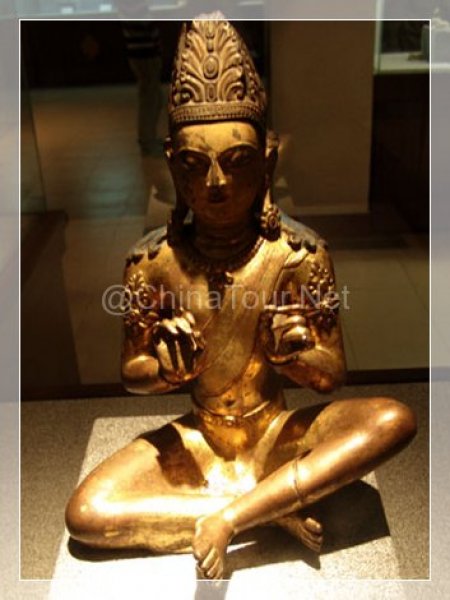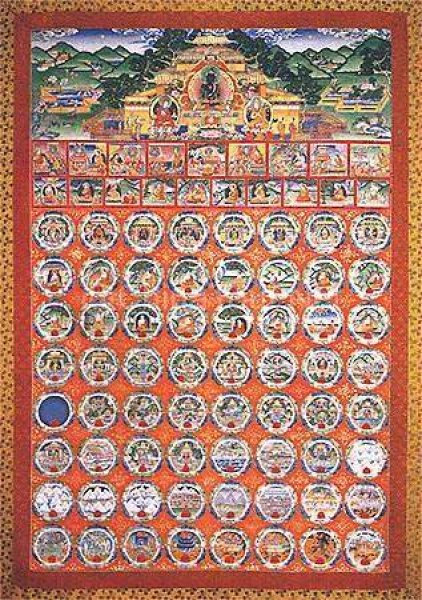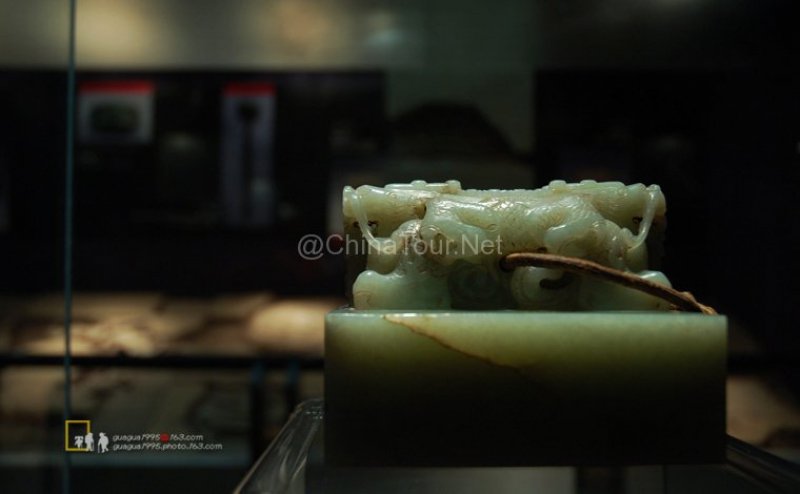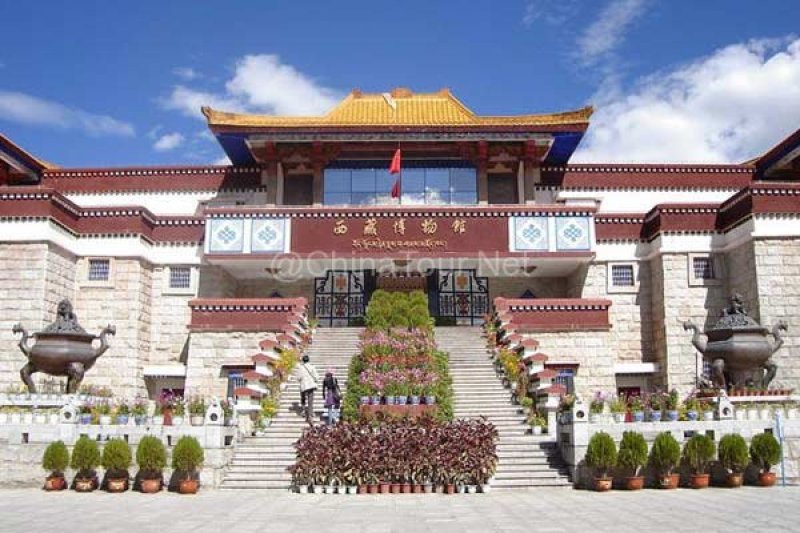As Tibet’s first museum in the modem sense, the museum of Tibet,situated at the southeastern corner of the Buddhist religious garden Norbulingka in Lhasa, was inaugurated in October 1999 on occasion of the 50th anniversary of the founding the People’s Republic of China and the 40th anniversary of the Democratic Reforms in Tibet as the product of one of 62 Chinese government funded projects launched in July 1994 in commemoration of the 30th anniversary of the formation of the Autonomous Region of Tibet.
Covering 53,959 square metres, the museum is an enormous and magnificent building complex with a total floor area of 23,508 square metres, including exhibition halls with 10,451 square metres. In plan, strictly arranged along the axis of the compound stand one after the other introductory hall, the main exhibition hall and the storehouse for culture relics. The architecture design, while bearing conspicuous signs of Tibetan ethnical tradition, obviously reveals the modernist emphasis on practical function and the post-modernist artistic features. It represents a harmonious application of those three distance elements. The whole treasure of cultural relics houses in the museum include a wide range of prehistoric cultural remains, statues of Buddha and Bodhisattvas made of different materials, ancient Tibetan scriptural texts written in inks of gold, silver and coral, delicate Thangka paintings, various musical instruments and ritual articles. To these are added handicrafts characteristic of Tibet, pottery of unique styles etc. The inaugural show was exclusively dedicated to the general theme of “the history and culture of and art; the folk culture”. The museum performs the concurrent functions of preservation, academic research and social education. Furnished with air-conditional devices, multi-functional saccousto-optic equipment, sophisticated.
Opening hours: 9:00-12:00 14:30-17:30 closed on Monday
Entrance fee: free; passport or ID required
Address: No.19 Norblingka Road, Lhasa, Tibet.











